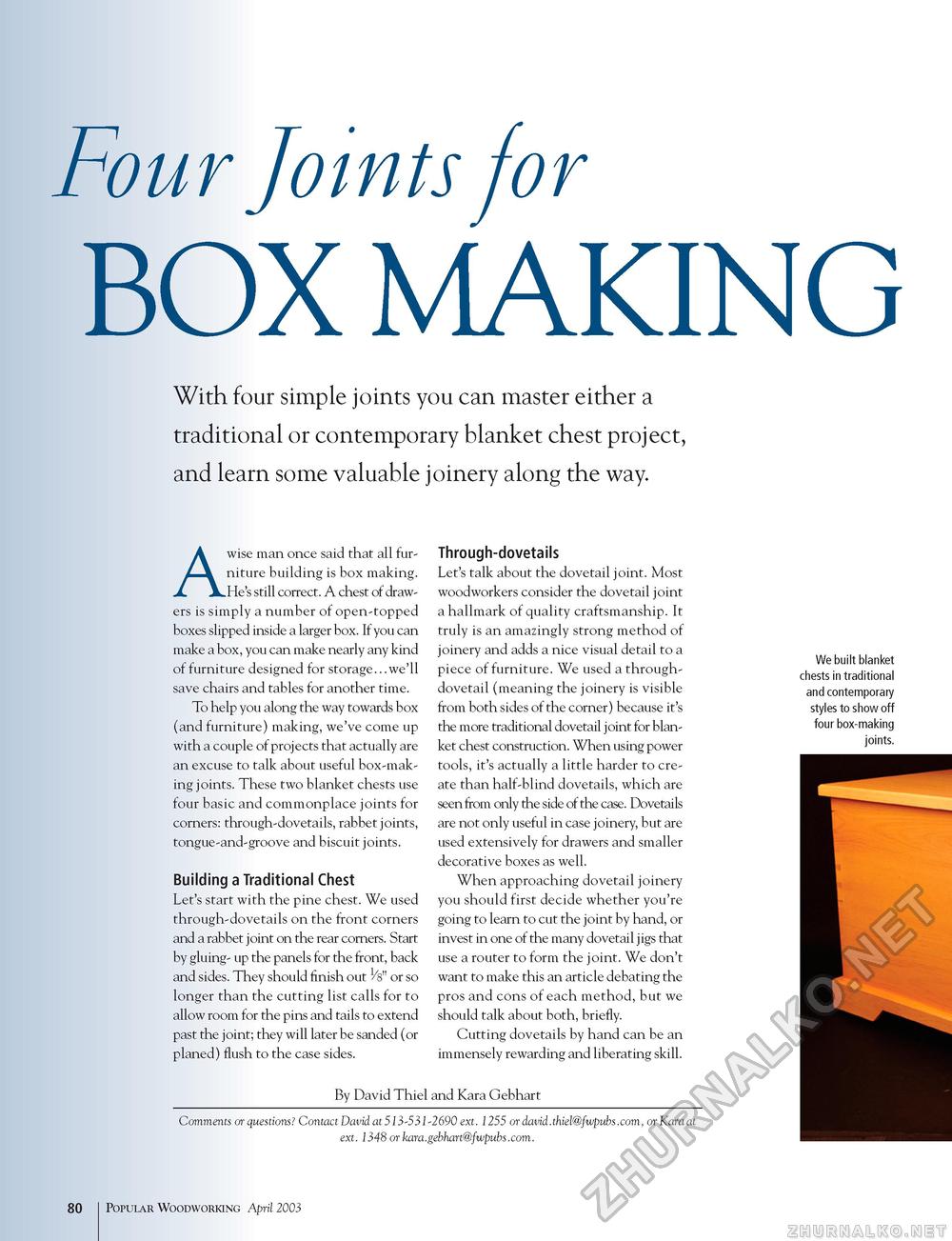Popular Woodworking 2003-04 № 133, страница 79
BOX MAKINGWith four simple joints you can master either a traditional or contemporary blanket chest project, and learn some valuable joinery along the way. A wise man once said that all furniture building is box making. He's still correct. A chest of drawers is simply a number of open-topped boxes slipped inside a larger box. If you can make a box, you can make nearly any kind of furniture designed for storage...we'll save chairs and tables for another time. To help you along the way towards box (and furniture) making, we've come up with a couple of projects that actually are an excuse to talk about useful box-making joints. These two blanket chests use four basic and commonplace joints for corners: through-dovetails, rabbet joints, tongue-and-groove and biscuit joints. Building a Traditional Chest Let's start with the pine chest. We used through-dovetails on the front corners and a rabbet joint on the rear corners. Start by gluing- up the panels for the front, back and sides. They should finish out Vs" or so longer than the cutting list calls for to allow room for the pins and tails to extend past the joint; they will later be sanded (or planed) flush to the case sides. Through-dovetails Let's talk about the dovetail joint. Most woodworkers consider the dovetail joint a hallmark of quality craftsmanship. It truly is an amazingly strong method of joinery and adds a nice visual detail to a piece of furniture. We used a through-dovetail (meaning the joinery is visible from both sides of the corner) because it's the more traditional dovetail joint for blanket chest construction. When using power tools, it's actually a little harder to create than half-blind dovetails, which are seen from only the side of the case. Dovetails are not only useful in case joinery, but are used extensively for drawers and smaller decorative boxes as well. When approaching dovetail joinery you should first decide whether you're going to learn to cut the joint by hand, or invest in one of the many dovetail jigs that use a router to form the joint. We don't want to make this an article debating the pros and cons of each method, but we should talk about both, briefly. Cutting dovetails by hand can be an immensely rewarding and liberating skill. We built blanket chests in traditional and contemporary styles to show off four box-making joints. By David Thiel and Kara Gebhart Comments or questions? Contact David at 513-531-2690 ext. 1255 or david.thiel@fwpubs.com, or Kara at ext. 1348 or kara.gebhart@fwpubs.com. 80 Popular Woodworking April 2003 |








